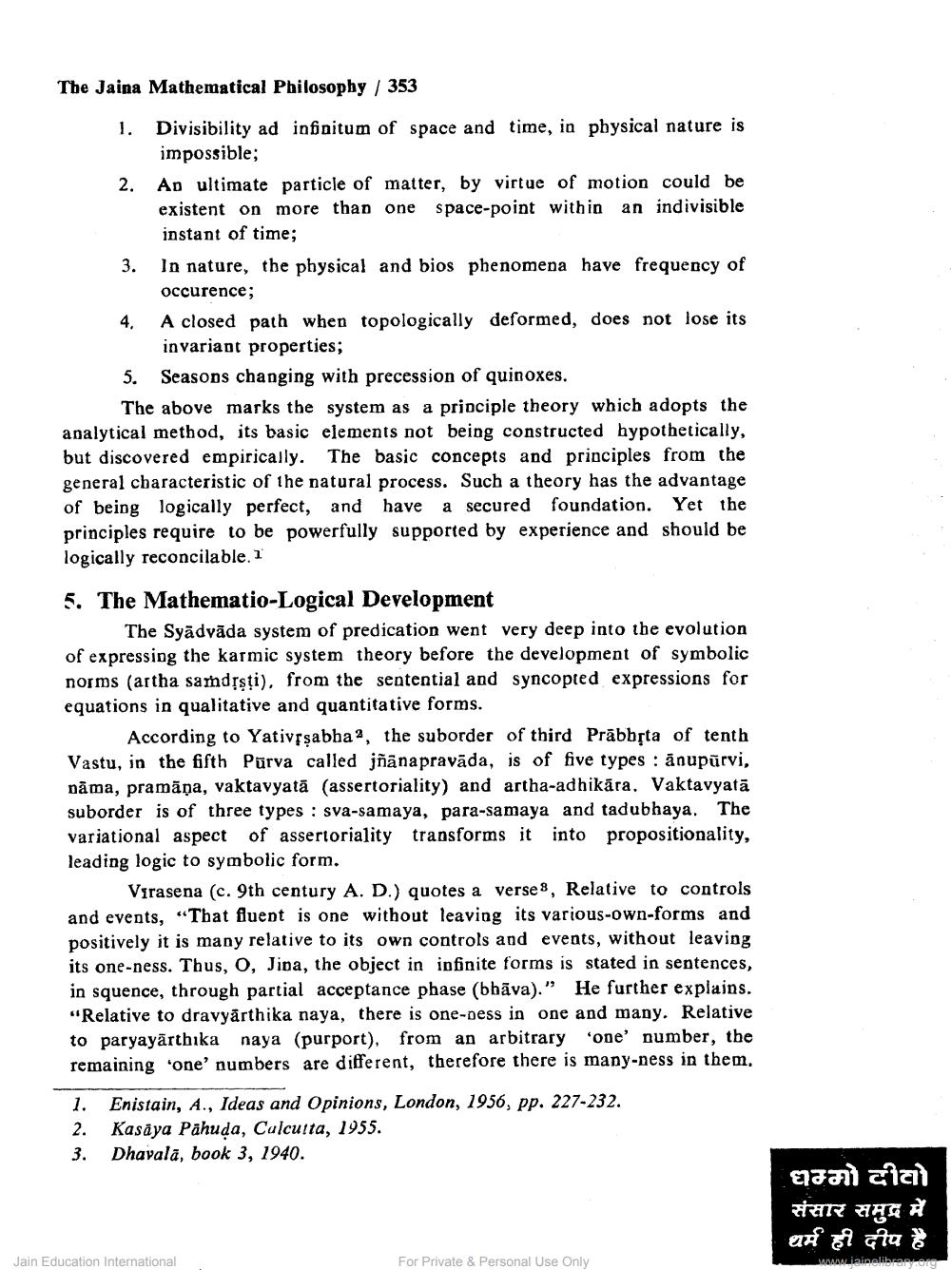________________
The Jaina Mathematical Philosophy / 353
2.
1. Divisibility ad infinitum of space and time, in physical nature is
impossible; An ultimate particle of matter, by virtue of motion could be existent on more than one space-point within an indivisible
instant of time; 3. In nature, the physical and bios phenomena have frequency of
occurence; A closed path when topologically deformed, does not lose its
invariant properties; 5. Seasons changing with precession of quinoxes.
The above marks the system as a principle theory which adopts the analytical method, its basic elements not being constructed hypothetically, but discovered empirically. The basic concepts and principles from the general characteristic of the natural process. Such a theory has the advantage of being logically perfect, and have a secured foundation. Yet the principles require to be powerfully supported by experience and should be logically reconcilable. 1 5. The Mathematio-Logical Development
The Syädvāda system of predication went very deep into the evolution of expressing the karmic system theory before the development of symbolic norms (artha samdrsti), from the sentential and syncopted expressions for equations in qualitative and quantitative forms.
According to Yativ sabha2, the suborder of third Prābbộta of tenth Vastu, in the fifth Purva called jñānapravāda, is of five types : ānupūrvi, nāma, pramāņa, vaktavyatā (assertoriality) and artha-adhikära. Vaktavyatā suborder is of three types : sva-samaya, para-samaya and tadubhaya. The variational aspect of assertoriality transforms it into propositionality, leading logic to symbolic form.
Virasena (c. 9th century A. D.) quotes a verse, Relative to controls and events, “That fluent is one without leaving its various-own-forms and positively it is many relative to its own controls and events, without leaving its one-ness. Thus, O, Jipa, the object in infinite forms is stated in sentences, in squence, through partial acceptance phase (bhāva)." He further explains. “Relative to dravyärthika naya, there is one-pess in one and many. Relative to paryayarthika naya (purport), from an arbitrary one number, the remaining 'one' numbers are different, therefore there is many-ness in them.
1. 2. 3.
Enistain, A., Ideas and Opinions, London, 1956, pp. 227-232. Kasaya Pahuda, Calcutta, 1955. Dhavalā, book 3, 1940.
Em dia संसार समुद्र में धर्म ही दीय है
www.dainelibrary.org
Jain Education International
For Private & Personal Use Only




